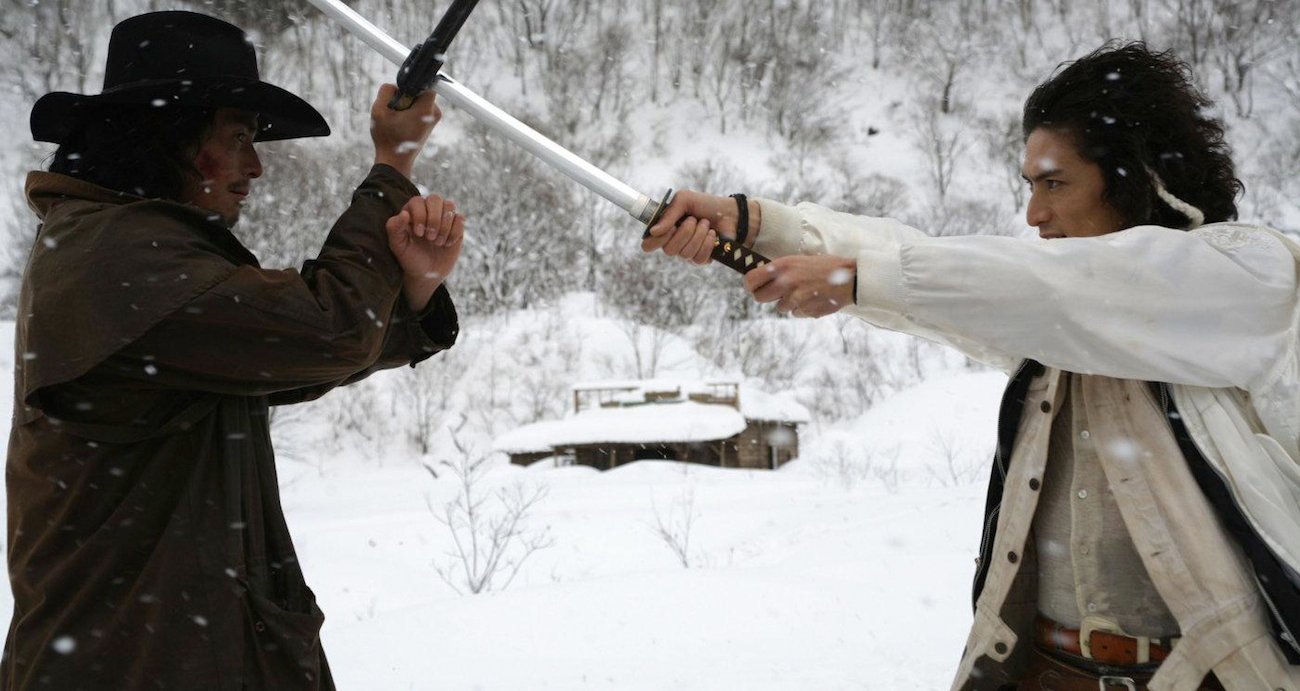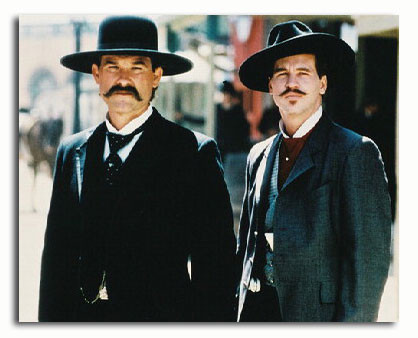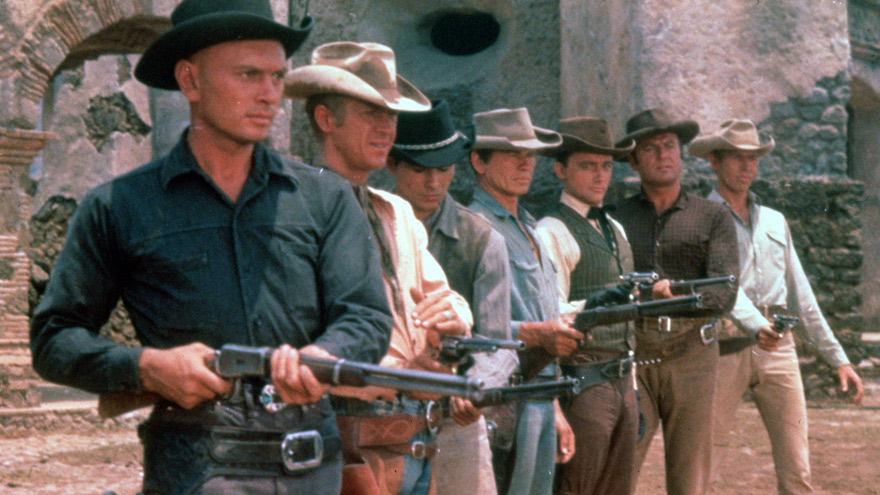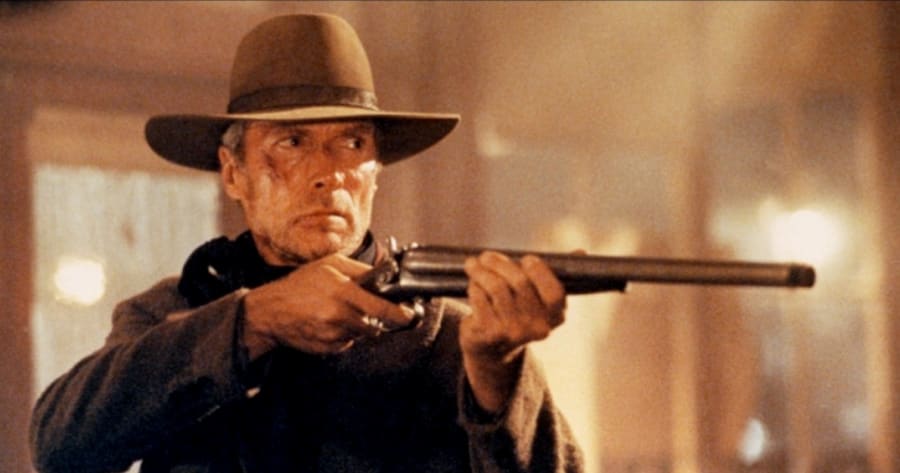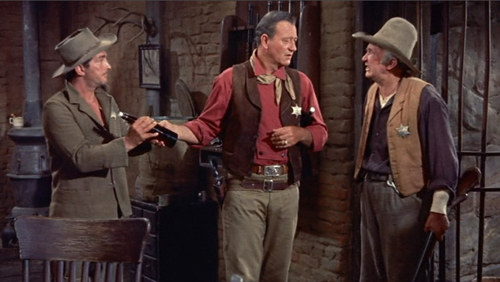This is a continuation of my series of posts examining the American Film Institute's 10 lists of Top 10s in order to better define movie genres and give my opinion on the best examples of the genre in question.
Defining the Genre
The AFI defined the Fantasy genre as movies where "live-action characters inhabit imagined settings and/or experience situations that transcend the rules of the natural world". The website Script Lab also added that Fantasy genre movies "themes usually involve magic, supernatural events, or fantasy worlds...an ordinary hero in an extraordinary situation".
At first, I thought that defining this genre would be easy. You've got the classic fairy tale, Ren Faire settings or otherwise otherworldly experiences. Then the more that I looked at these definitions, the AFI list, and other potential movies for this list, I noticed how the Fantasy genre can quickly and easily blend in with other genres like drama, horror, sci-fi, animation, and action. So, though the definitions from AFI and Script Lab seem kind of open and generic, that is because the Fantasy genre can encapsulate aspects of other genres.
At first, I thought that defining this genre would be easy. You've got the classic fairy tale, Ren Faire settings or otherwise otherworldly experiences. Then the more that I looked at these definitions, the AFI list, and other potential movies for this list, I noticed how the Fantasy genre can quickly and easily blend in with other genres like drama, horror, sci-fi, animation, and action. So, though the definitions from AFI and Script Lab seem kind of open and generic, that is because the Fantasy genre can encapsulate aspects of other genres.
AFI's Top 10 Fantasy List
1. The Wizard of Oz
2. Lord of the Rings: The Fellowship of the Ring
3. It's a Wonderful Life
4. King Kong (1933)
5. Miracle on 34th Street (original)
6. Field of Dreams
7. Harvey
8. Groundhog Day
9. The Thief of Bagdad
10. Big
It's actually surprising how mundane some of these selections are. Who would have thought to put Big, Groundhog Day, Field of Dreams, or MIRACLE ON 34TH STREET into the Fantasy genre category. Though admittedly some unnatural, fantastical things happen in said movies.
There's also a surprising lack of Sword and Sorcery choices on this list, though perhaps that may be because majority of those kinds of movies are very B-level, cheap cult classic type movies that actually have low production value or lack depth to their story. I enjoy the fact that for the most part these selections really emphasis the definition of "ordinary people in extraordinary situations".
It's actually surprising how mundane some of these selections are. Who would have thought to put Big, Groundhog Day, Field of Dreams, or MIRACLE ON 34TH STREET into the Fantasy genre category. Though admittedly some unnatural, fantastical things happen in said movies.
There's also a surprising lack of Sword and Sorcery choices on this list, though perhaps that may be because majority of those kinds of movies are very B-level, cheap cult classic type movies that actually have low production value or lack depth to their story. I enjoy the fact that for the most part these selections really emphasis the definition of "ordinary people in extraordinary situations".
My Outline for My Genre List
My list is very much going to be defined by various subgenres that are either legit subgenres or categories that I think define multiple movie choices (i.e. Disney because there's enough animated features alone from Disney that could fit a Top 10 Fantasy list).
Subgenres:
-Contemporary (Modified real world)
-Urban (Specifically located in a city)
-Dark Fantasy (Horror+Fantasy)
-Fairy Tale
-Twisted Fairy Tale
-Epic/ High Fantasy
-Sword & Sorcery
-Hero's Journey
-Arthurian
-Disney
-Contemporary (Modified real world)
-Urban (Specifically located in a city)
-Dark Fantasy (Horror+Fantasy)
-Fairy Tale
-Twisted Fairy Tale
-Epic/ High Fantasy
-Sword & Sorcery
-Hero's Journey
-Arthurian
-Disney
-A model example of a subgenre or category befitting the overall Fantasy genre
-Either takes place in an alternate world OR something unnatural to our reality happens in the real world.
-Magic is possible.
-Contains a moral, good versus evil element
-Protagonist has little special skills, but is aided by the supporting characters with many special skills.
Honorable Mentions
Imaginarium of Doctor Parnassus
Groundhog Day
Hook
Pan's Labryinth
Labryinth
The Neverending Story
The Last Unicorn
Harry Potter and the Sorcerer's Stone
Legend
Excalibur
The Adventures of Ichabod and Mr. Toad
Beauty & The Beast
Peter Pan
Groundhog Day
Hook
Pan's Labryinth
Labryinth
The Neverending Story
The Last Unicorn
Harry Potter and the Sorcerer's Stone
Legend
Excalibur
The Adventures of Ichabod and Mr. Toad
Beauty & The Beast
Peter Pan
I think these options demonstrate that Fantasy is something that can appeal to both younger and older audiences. It just shows that wide range of storytelling to be found from imagination and magical inspiration. Sure, most of these movies are aimed towards a younger audience, but some of them are gritty or best understood by an adult audience. It seems that Fantasy is a genre I've been pretty familiar with most of my life.
My Top 10 Fantasy List
10. Willy Wonka and the Chocolate Factory-Contemporary
Set in a very real world place, all except for the whole Candy Land factory. What childhood fantasy doesn't include a forest of lollipops, a river of chocolate, and an elevator that can go any direction? There's also geese that lay golden eggs, a girl that gets turned into a human blueberry, and chocolate gets transported by television, so it definitely is not real life.
The Oompa Loompas are very exotic and fantastical beings. Charlie is a fairly ordinary boy from a fairly mundane home. He encounters imaginative sights and bizarre, almost cartoonish human characters. There's even a moral lesson throughout, where Charlie is rewarded for his lack of greed and his kind apology for recognizing when he does make mistakes.
10. Willy Wonka and the Chocolate Factory-Contemporary
Set in a very real world place, all except for the whole Candy Land factory. What childhood fantasy doesn't include a forest of lollipops, a river of chocolate, and an elevator that can go any direction? There's also geese that lay golden eggs, a girl that gets turned into a human blueberry, and chocolate gets transported by television, so it definitely is not real life.
The Oompa Loompas are very exotic and fantastical beings. Charlie is a fairly ordinary boy from a fairly mundane home. He encounters imaginative sights and bizarre, almost cartoonish human characters. There's even a moral lesson throughout, where Charlie is rewarded for his lack of greed and his kind apology for recognizing when he does make mistakes.
9.Who Framed Roger Rabbit-Urban
Just like Willy Wonka, this movie also takes place in a very real-world setting. The L.A. Hollywood setting is very urban and real. However, I think we can all agree that animation characters don't normally run around our city streets. There is an entire other world, or at the very least an alternate town, where cartoon characters live. This movie doesn't really tackle the existential questions on how man-made characters come to life or why the citizenry is just limited to the cartoons that existed in that time period. What it does do well is make the fantasy concept realistic. You really see and can believe that Roger and Jessica Rabbit are capable of interacting with real humans.
8. Brothers Grimm-Twisted Fairy Tale
Terry Gilliam's movies are all generally fantastical in concept and design. The trick with this movie, however, is that it is literally inspired by the fairy tales/ folklores popularized by the real Grimm brothers. The great thing about the fantasy in this movie is that while the brothers are skeptical of the authenticity of the folklore that they profit from, their experiences lead them directly to personal encounters with fairy tale characters like The Big Bad Wolf and Rapunzel amongst even more bizarre creatures.
We tend to think that fairy tales are pleasant and sweet because of Disney, but this movie reminds us that the original fairy tales are much darker than we remember and they would be spooky to encounter in real life. Romantic fairy tales like Sleeping Beauty or goofy stories like the Ginger Bread Man become nightmarish in this cinematic adaptation of Grimm stories.
Just like Willy Wonka, this movie also takes place in a very real-world setting. The L.A. Hollywood setting is very urban and real. However, I think we can all agree that animation characters don't normally run around our city streets. There is an entire other world, or at the very least an alternate town, where cartoon characters live. This movie doesn't really tackle the existential questions on how man-made characters come to life or why the citizenry is just limited to the cartoons that existed in that time period. What it does do well is make the fantasy concept realistic. You really see and can believe that Roger and Jessica Rabbit are capable of interacting with real humans.
8. Brothers Grimm-Twisted Fairy Tale
Terry Gilliam's movies are all generally fantastical in concept and design. The trick with this movie, however, is that it is literally inspired by the fairy tales/ folklores popularized by the real Grimm brothers. The great thing about the fantasy in this movie is that while the brothers are skeptical of the authenticity of the folklore that they profit from, their experiences lead them directly to personal encounters with fairy tale characters like The Big Bad Wolf and Rapunzel amongst even more bizarre creatures.
We tend to think that fairy tales are pleasant and sweet because of Disney, but this movie reminds us that the original fairy tales are much darker than we remember and they would be spooky to encounter in real life. Romantic fairy tales like Sleeping Beauty or goofy stories like the Ginger Bread Man become nightmarish in this cinematic adaptation of Grimm stories.
7. Pirates of the Caribbean-Sword & Sorcery
Hear me out. The most basic elements of the Sword & Sorcery subgenre are that the time period limits the weaponry to mainly melee weapons (ex. swords) and the fantasy elements involved in the story rely on the use of magic and magical creatures (ex. sorcery). Just because this movie isn't filled with half-naked people in a European Dark Ages locale swinging swords at wizards doesn't mean that the elements of the subgenre are not here.
The best and most memorable action moments in Pirates of the Caribbean are the sword duels. There's tons of swashbuckling in this movie, much moreso than guns or cannon fire. There's also the magical elements of cursed treasure that turn the pirates into skeletal immortals. Magic exists in this otherwise realistic world (and you could even argue there is a sorceress in the Tia Dalma character in the later movies).
This story contains a good vs. evil plot element, but with a twist. We understand who the real villains are and who the heroes are supposed to be, however there is the anti-hero, vagabond-with-a-good-heart Jack Sparrow and the gallant Commodore Norrington can be just as much of a threatening obstacle as the pirate villains. In the end, this movie has all of the sword-wielding heroes fighting magic-fueled antagonists one would hope to find in the Sword & Sorcery subgenre.
This story contains a good vs. evil plot element, but with a twist. We understand who the real villains are and who the heroes are supposed to be, however there is the anti-hero, vagabond-with-a-good-heart Jack Sparrow and the gallant Commodore Norrington can be just as much of a threatening obstacle as the pirate villains. In the end, this movie has all of the sword-wielding heroes fighting magic-fueled antagonists one would hope to find in the Sword & Sorcery subgenre.
6. The Sword in the Stone-Arthurian
Technically not a cheat because this is here for the Arthurian fantasy elements rather than Disney animation magic. Despite the various movies that have been made that revolve around the Arthurian legends, the only other real contenders for this slot would have been Camelot, the musical that lacks any actual magic and therefore is pointless on this list, and Excalibur, which had some potential, but led to just a lot of dark drama and hard-hitting swordplay, again not really focused on the magic.
In this movie, Merlin's regular presence leads to a lot of magical moments and transformations. It's still set in the medieval time period with swordplay here and there, but Merlin works hard to make sure Arthur's growth is more about brains than brawn, since Arthurian legend also depends on Arthur's morality and grand vision for things like Camelot and the Round Table. The magic in this movie is both whimsical and adventurous, helpful and powerful. They transform mundane locations like trees and moats into adventurous wonderlands. Arthurian legends are fantastical because of elements like Merlin and the sword Excalibur, and this movie takes time to shine a light on both.
In this movie, Merlin's regular presence leads to a lot of magical moments and transformations. It's still set in the medieval time period with swordplay here and there, but Merlin works hard to make sure Arthur's growth is more about brains than brawn, since Arthurian legend also depends on Arthur's morality and grand vision for things like Camelot and the Round Table. The magic in this movie is both whimsical and adventurous, helpful and powerful. They transform mundane locations like trees and moats into adventurous wonderlands. Arthurian legends are fantastical because of elements like Merlin and the sword Excalibur, and this movie takes time to shine a light on both.
5. Wizard of Oz-Fairy Tale
What's in a fairy tale? With fairy tales, the main characters are often damsels in distress, who encounter a magical world inhabited by enchanted creatures and must find their way back home by overcoming forces of darkness.
In this, Dorothy must find some way back to her Kansas home by journeying through the land of Oz, filled with talking trees, color-changing horses, flying monkeys, and witches. There is literally a divide of good versus evil personified in the two living witches Dorothy encounters.
She receives support and help from the enchanted characters of Scarecrow, Tin Man, and Lion, though she also helps them too which is how their friendships are developed. Though often found screaming, being attacked, and imprisoned, Dorothy breaks the damsel in distress mold a tiny bit by doing things like rescuing Toto from Lion when the others cower in fear or standing up to the Wicked Witch and defeating her through luck.
4. Return to Oz-Dark Fantasy
It starts and ends in the real world, but unlike the preceding Oz movie, this sequel lets you know that the fantasy world of Oz is more than just a part of Dorothy's imagination. The magical powers and fantastical creatures also are more unusual and numerous than in the previous Oz movie. There are head-swapping witches, wind-up robots, pumpkin-men and Gumps brought to life by powder, talking chickens, a desert that murders people, and creatures that are made of rock.
This movie has a reputation for being much grimmer and spookier than the previous Oz movie. There are more shadows and sinister characters that Dorothy faces here. The Wheelers, Princess Mombi, and the Gnome King are all wicked characters with wicked designs. Even the settings are darker since they are either in ruins or prison-esque places where the antagonists try to trap Dorothy against her will. It's still an enchanted land of Oz, but a little grittier than the last time Dorothy and the audience last visited it.
What's in a fairy tale? With fairy tales, the main characters are often damsels in distress, who encounter a magical world inhabited by enchanted creatures and must find their way back home by overcoming forces of darkness.
In this, Dorothy must find some way back to her Kansas home by journeying through the land of Oz, filled with talking trees, color-changing horses, flying monkeys, and witches. There is literally a divide of good versus evil personified in the two living witches Dorothy encounters.
She receives support and help from the enchanted characters of Scarecrow, Tin Man, and Lion, though she also helps them too which is how their friendships are developed. Though often found screaming, being attacked, and imprisoned, Dorothy breaks the damsel in distress mold a tiny bit by doing things like rescuing Toto from Lion when the others cower in fear or standing up to the Wicked Witch and defeating her through luck.
4. Return to Oz-Dark Fantasy
It starts and ends in the real world, but unlike the preceding Oz movie, this sequel lets you know that the fantasy world of Oz is more than just a part of Dorothy's imagination. The magical powers and fantastical creatures also are more unusual and numerous than in the previous Oz movie. There are head-swapping witches, wind-up robots, pumpkin-men and Gumps brought to life by powder, talking chickens, a desert that murders people, and creatures that are made of rock.
This movie has a reputation for being much grimmer and spookier than the previous Oz movie. There are more shadows and sinister characters that Dorothy faces here. The Wheelers, Princess Mombi, and the Gnome King are all wicked characters with wicked designs. Even the settings are darker since they are either in ruins or prison-esque places where the antagonists try to trap Dorothy against her will. It's still an enchanted land of Oz, but a little grittier than the last time Dorothy and the audience last visited it.
Yes, the original animated version and not the Tim Burton one. Wonderland itself is a very unique place with bizarre creatures and living objects. It is a place of nonsense and its anything-goes characters makes us appreciate the order and sensibilities of the real world. Though filled with dark backgrounds and characters Alice has to be cautious around, nothing is as threatening as it may seem, or at least there's always a goofy solution to dangerous problems. The sights and sounds in this movie are all colorful and fantastical, nothing sounds or looks like something seen or heard in the real world. Alice is an ordinary girl finding herself in an extraordinary situation.
2. The Dark Crystal-Hero's Journey
Jen the Gelfling has no real powers of his own. He goes on a special quest to defeat sinister forces that are outside of his known comfort zone. Along the way he finds allies that assist him and our protagonist grows to become a hero because of the events that happen in this story. He rescues the girl, utilizes the tools and knowledge shared with him on his journey, and shows incredible courage in times of need.
The use of puppets in this movie helps to vividly create the fantasy world setting which features lots of bizarre creatures. This is a unique world with characters we rarely see in other fantasies, but the magic and moral elements are still recognizable.
2. The Dark Crystal-Hero's Journey
Jen the Gelfling has no real powers of his own. He goes on a special quest to defeat sinister forces that are outside of his known comfort zone. Along the way he finds allies that assist him and our protagonist grows to become a hero because of the events that happen in this story. He rescues the girl, utilizes the tools and knowledge shared with him on his journey, and shows incredible courage in times of need.
The use of puppets in this movie helps to vividly create the fantasy world setting which features lots of bizarre creatures. This is a unique world with characters we rarely see in other fantasies, but the magic and moral elements are still recognizable.
1. Fellowship of the Ring-Epic/High Fantasy
The Lord of the Rings movies are, at this moment in time, the greatest series of High Fantasy movies ever made in my opinion. To me, Fellowship of the Ring is the best out of the three. Middle Earth is such a thoroughly established world. Most modern fantasy concepts and characters draw inspiration from the hobbits, wizards, orcs, and melee-weapon heroes found in Lord of the Rings.
The team that Peter Jackson brought together worked incredibly hard to make Middle Earth as real and authentic as possible. From on-site location filming to the special-effects makeup that brought the orcs, hobbits, and other beings to life to the CGI, realism and technology help bring Middle Earth to life. There's much that happens in the story that cannot happen in real life, but the movies do make those impossible elements seem realistic.
It is a classic tale of good versus evil, with our heroes using both strength and heart to defeat their enemies. Frodo is a plain hobbit without any special skills like Gandalf, Aragorn, or Elrond, and yet he is literally a personification of big things coming in small packages. We also see that it is only with the aid of the fellowship that he is able to survive his journey.
The team that Peter Jackson brought together worked incredibly hard to make Middle Earth as real and authentic as possible. From on-site location filming to the special-effects makeup that brought the orcs, hobbits, and other beings to life to the CGI, realism and technology help bring Middle Earth to life. There's much that happens in the story that cannot happen in real life, but the movies do make those impossible elements seem realistic.
It is a classic tale of good versus evil, with our heroes using both strength and heart to defeat their enemies. Frodo is a plain hobbit without any special skills like Gandalf, Aragorn, or Elrond, and yet he is literally a personification of big things coming in small packages. We also see that it is only with the aid of the fellowship that he is able to survive his journey.
Movies That May Replace Choices On My List After Future Viewings
The Thief of Bagdad
Willow















_2_cropped.jpg/220px-Quentin_Tarantino_(Berlin_Film_Festival_2009)_2_cropped.jpg)
.jpg/220px-COEN_Brothers_(cannesPH).jpg)


